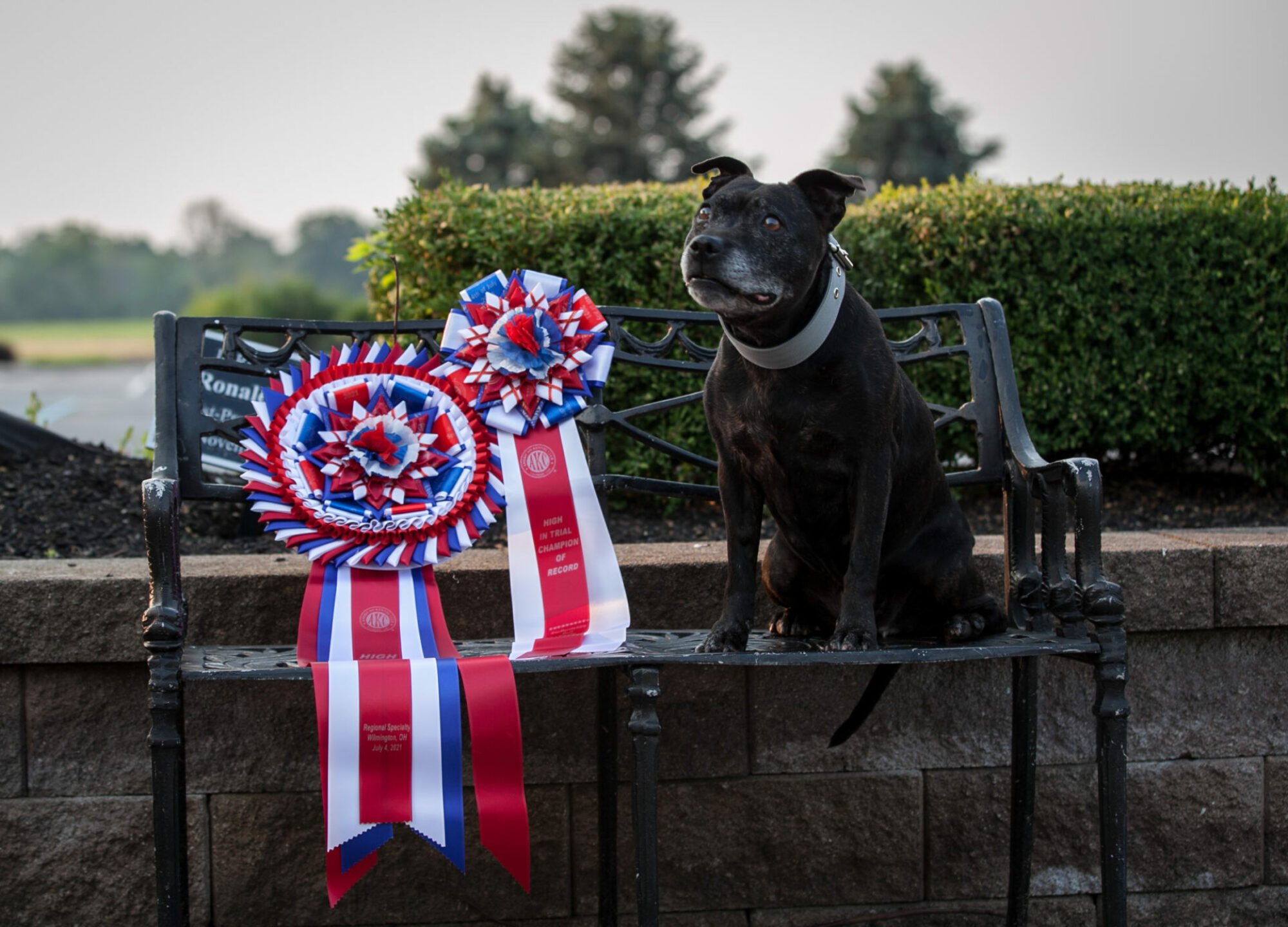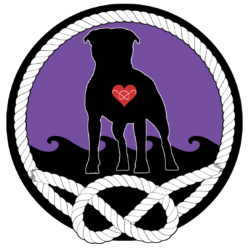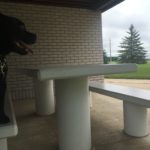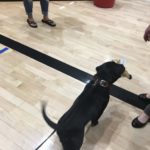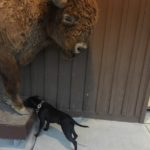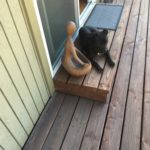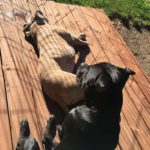The following two posts were written by my good friend and puppy owner – I am sharing because I feel its worthy of being on this blog. So often I get calls and emails from people wanting to buy a Stafford puppy but they haven’t done any research – all they can think about is – I WANT A PUPPY. I WANT A PUPPY NOW. HERE IS MY LENGTHY LIST OF CRITERIA AND THIS IS WHAT I WILL PAY YOU. Uhm…..no.
In todays throwaway world all too often people buy puppies for all the wrong reasons. Its not fair to the dog, not fair to you and not fair to those of us doing rescue who end up cleaning up the mess. Not every breed is right for every person. Not every breeder produces the same quality puppies.
Pay attention to breeders listed on a parent club breeder referral list because basically any member of the club with the money to pay for the listing can advertise. There is no screening but when speaking with potential puppy buyers I found out that it is implied they have been screened, approved and wholeheartedly a better choice. This is not always true. The same holds true for the AKC Marketplace for the same reasons. Reach out with phone calls/emails and make that effort when searching for a breeder and get to know one another. Decide together if you make a good team. For me, I like the personal interaction.
This is her post:
_____________________________________________________________________
_____________________________________________________________________
“Reposting for those of you looking for a puppy”
I bought a dog from a breeder, just as many of you have, or will do. I thought I’d share the process that I went through with you.
My decision on the breed was made many years ago, way before I was ready to get one. I researched. I read everything that I could find- some of it accurate, some of it fluff (there is always someone writing fluff, trying to sell their puppies. Pretty much, if a breeder tells you that their breed has NO negative traits, they’re not telling you everything.). I went out to the parent club’s website (every AKC breed has a parent club) and found that they have a breeder referral list. I decided to start there. (Be careful- some breed clubs don’t have any criteria for who’s on their list. If they breed, they’re there – you will still have to weed through the list for a responsible breeder). I visited and bookmarked a TON of websites. Unfortunately for the average person, all breeder’s websites look a like. They all have pictures of the dogs, and they all spew some dog show jargon that sounds impressive to the untrained ear. I’m not 100% sure how to teach you how to spot the real deal, as recently I have seen some breeder websites that I really had to dig to determine if they were responsible breeders, or some shyster just breeding dogs. A couple of big tells are if the breeder is talking as if they show their dogs, there should be REAL dog show pictures – with ribbons, and judges, and a little plaque that says the date and what they’ve won (or performance pictures will be captioned with the title earned). Don’t believe it just because it’s on the Internet – go to the AKC site and search the dogs and see if they really have earned those wins. For anyone reading this who says that they don’t care if the breeder shows dogs or not, please see my previous facebook rant, I mean, informational post: (see her other post below) (this Is also where I discuss the price of dogs, and what you get for that price). If a breeder says their dogs have health clearances, check them out! OFA (Orthopedic Foundation for Animals) has a website where all you need is the dog’s name to search. Take the time and do the search! I have done TONS of searches for people, only to learn that the dog I searched doesn’t really have any clearances! If a breeder talks about their dog’s temperaments, how do they know? If the dogs live in a kennel situation, they don’t know unless their doing something with the dogs (dog shows, obedience, agility, etc). How do they know what the dogs are like in real life situations – going for walks in a neighborhood, reaction to the vacuum cleaner, do they spook because the ceiling fan is on, what are they like when company comes over, etc. Manners are taught, behavior is GENETIC. And look for the ‘over done’ website – the website that is geared just towards selling puppies.
I saw some wonderfuI websites, with some beautiful dogs, who had some big wins. There were a few who met my criteria – I was looking for a performance dog, with good structure, a solid temperament, and who’s parents were health tested. I am picking a member of my family – I am not going to cut corners. In the end, I had my eye on one breeder in particular. To me, it was a pretty easy choice based on the one thing that made her different from the rest – she is a raw feeding, all natural breeder. To me, this was important. For you, it may not be – everyone has different goals and priorities. I sent her an email. I sent a detailed introduction of who I am, what I could offer one of her puppies, and what kind of life he would have with me. I must have made an impression, because I received a reply and a phone call. I was interviewed. I was asked a lot of questions, and had to fill out a very detailed application. I was happy to do it. It meant that she is being responsible about where her dogs go, and what kind of life they would have. In the end, after some more questions from both sides, we agreed that we were a good match.
That was 10 months before I got my puppy. If you want a puppy the day you start looking, or for Christmas, or for someone’s birthday, you’re doing it wrong. First, you chose the breeder, then you look at the dogs she is going to breed, and if you’re happy with that, you wait. I have had people wait as long as 2 years to get one of my puppies. Breeders can’t make their girls go into season.
Over the months, I kept in touch with the breeder. I didn’t constantly send her emails asking if her girl has been bred – I knew she would let me know when she was ready. With the internet, keeping in touch was easy. Over the months, she would get to know me better, and I would get to know more about her dogs and her dog ethics (she does rescue, is anti commercial breeders, is involved in her breed club, etc). The entire time I waited, I was prepared to walk away from the whole thing. As much as I thought that I liked her and her dogs, if something were to come up that I couldn’t compromise on, or made me uncomfortable, I would have started my search for a breeder all over again. I have met many, MANY people who settle on a breeder and even if there are screaming red flags, they will still get a puppy from them. You have to be prepared to walk away all the way up to the moment that you sign the contract (the most common story I hear is that people get to the breeder’s home and find that it is somewhere they feel they need to rescue the puppy from, or they get there and can obviously see that the puppy is timid and will not be the happy, well adjusted dog they had been promised).
And then the call came, the bitch had been bred! And now more waiting. Is she really pregnant? How many puppies will she have? Will there be a male in there for me? I wonder how many other people she has waiting? Are they ahead of me? Even if there is a male, will he have the temperament that I want? And the LEAST important thing was, I wonder what color they will be? You should not chose a dog by the color of his hair! Do I have a personal preference? Of course! Did I get it? Nope. I never have! I have a house full of wonderful dogs and cats, who have amazingly wonderful temperaments, none of which are the colors that I would have chosen if that were my only criteria.
4 puppies were born, 3 were males – things were looking good for me. Now to wait for them to get up on their feet so that structure and temperament could be evaluated.
I consider myself very lucky to have found an exceptional breeder. She met all my basic criteria, and then some. She had people visit the puppies, so strangers wouldn’t stress them. She did Early Neurological Stimulation with the puppies:
http://scholar.google.com/scholar_url…. She followed a mind stimulating, socialization program called Puppy Culture http://www.puppyculture.com/phone/index.html (Avidog has a similar program http://www.avidog.com/). She started their clicker training at 4 weeks old. Do you have any idea how nice it is to have your puppy offer a sit to everyone he meets, from the day you get him, without having had put any work into it??? She took them for trips to parks and other people’s homes. She introduced them to water and tiny little agility equipment (not all the puppies will use those skills, but all of them will benefit from the confidence such things build). She crate trained them, and started the housebreaking process. She laid all the groundwork for a well adjusted, confident dog. You have no idea how important this stuff is until your dog is about 2 years old and you realize that he’s the easiest dog you’ve ever had.
I didn’t get to pick my puppy. Why should I? Even if I spent 2 or 3 hours with the pups, it’s a drop in the bucket compared to the amount of time the breeder spent with them. First, the breeder needed to evaluate them on structure – which are the show dogs, and which are the pets (and pet status can be obtained by something as silly as a crooked tooth, or a mismarking – nothing that a pet home would care about, but is a big deal in the show world), which are the performance dogs, and which are the couch potatoes. A good breeder doesn’t just want to sell their puppies, they want everyone involved to be happy. I hear people talk about their puppy picking them, and while it’s a nice, romantic idea, it is not all that it’s cracked up to be.
I picked him up at 9 weeks. This was a compromise on the breeders part. She normally doesn’t let them go until 10-12 weeks (my puppies don’t leave until they are 10 weeks). The old ‘the younger, the better’ theory has been blown out of the water by research that says ‘no younger than 8 weeks’ (and 8 weeks is pushing it). Puppies who stay with their litter longer are more well adjusted, less bitey, and much more confident. http://www.avidog.com/wp-content/…/2015/01/49-Day-Myth-1.pdf. At 4 weeks old, puppies are just getting stable on their feet, and are starting to interact. At 5 and 6 weeks, they are interacting more, but they do a lot of falling over, so it’s all still very awkward. At 7 and 8 weeks, they are starting to have personalities and they are learning appropriate behavior from each other. At 9 and 10 weeks, they are learning social structure and more appropriate behaviors (like, ‘Ouch! You bit me too hard. I won’t play with you when you do that’). I actually would have preferred to have left him for another week, but I was going to have to travel to get him, and work was making 10 weeks near impossible. We both agreed that since I am a seasoned dog owner, and have multiple other dogs, I would be able to make up for that lost week or 2.
And it doesn’t end there. When you get a dog from a responsible breeder, you get an expert in the breed for the rest of the dog’s life. I have texted and called and asked questions, and I will continue to do so for years to come. Many of my local puppy buyers even have me come with them on major vet visits – I am happy to do it. Although you bought the puppy, and he is all yours, a good breeder will care what happens to him the rest of his life. A good breeder is there for you and her puppy for the dog’s ENTIRE life (including taking that dog back, for any reason, at any time).
Remember, your dog is the only family member you get to choose. Choose wisely.
Feel Free to share!”
